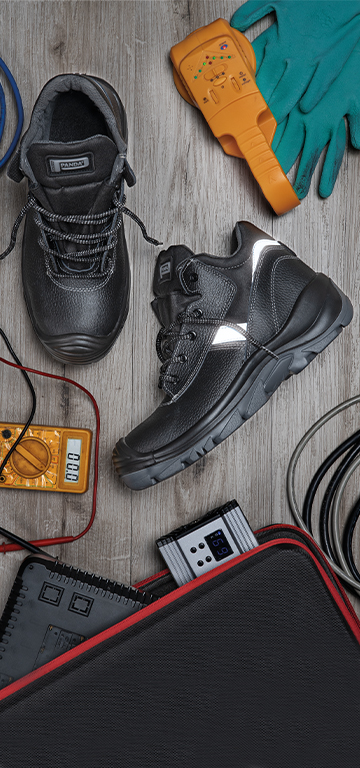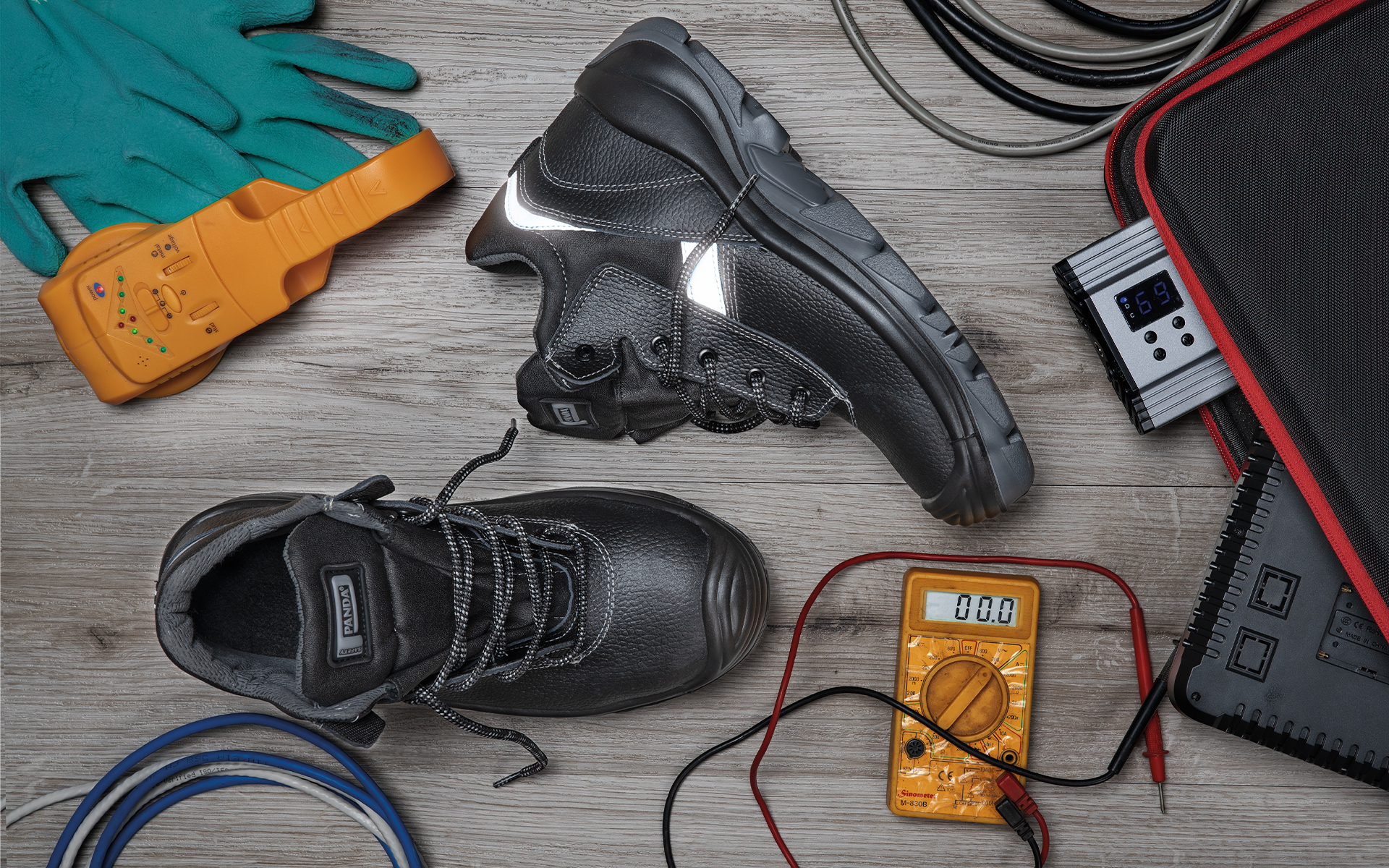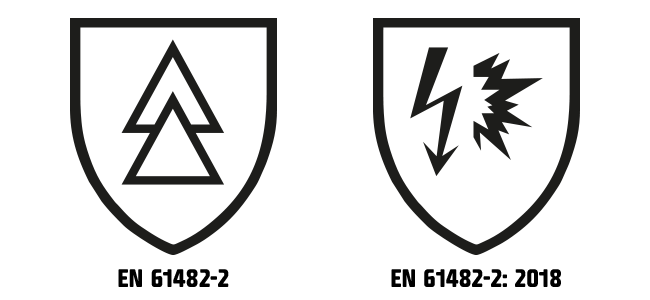
Elektrobīstamas situācijas

Elektrobīstamas situācijas
Elektrisko enerģiju nevar redzēt, kas padara to vēl bīstamāku. Pat neliela elektrostatiskā izlāde var sabojāt jutīgas elektroniskās komponentes un tādējādi rada lielu risku IT, telekomunikāciju vai aviācijas nozarē. Spēcīgāka izlāde rada dzirksteles, kas var izraisīt ugunsgrēku vai eksploziju bīstamās darba vietās. Vēl viens iespējamais apdraudējums ir elektriskās strāvas trieciens, kas īpaši apdraud elektriķus un cilvēkus, kuri strādā ar augstu spriegumu.
Aizsardzībai pret elektrību tiek izmantoti dažādi pasākumi un palīglīdzekļi. Izlasiet par atšķirībām starp antistatisko, dielektrisko un ESD aizsardzību un kādas citas darbības jāveic drošai darba vietai.
Electrostatic discharge hazard
What is the electrostatic discharge?

What is the electrostatic discharge?
Electrostatic discharge (ESD) is a swift discharge of electric current between two objects with different charges and different numbers of electrons. This exchange of electrons creates a large electromagnetic field buildup, resulting in ESD. You know it well from everyday life: your hair standing while you are brushing it, the electric "shock" you get from a metal doorknob, or the "spark" between you and another person when you shake hands. An outstanding example of electrostatic discharge in nature is lightning.
However, in industry, even a discharge smaller than lightning can cause great damage. Some electronic components can be damaged even by a voltage lower than 10 volts. Damage to one part sometimes leads to the failure of the entire system. Electrostatic discharge thus represents a great danger in fields such as aviation, the automotive industry, electronics manufacturing, IT, or telecommunications.
Kā šo risku samazināt ?

Kā šo risku samazināt ?
Saskaņā ar starptautiskiem pētījumiem lielākā daļa elektronisko ierīču bojājumu rodas darbinieku nepareizas aizsardzības līdzekļu lietošanas dēļ. Darbiniekiem jābūt aprīkotiem ar EN 61340 standartam atbilstošu apģērbu un aprīkojumu. Kā tie pasargā no elektriskās strāvas trieciena? Materiāli, no kuriem tie ir izgatavoti, satur elektrostatiski vadošu šķiedru, kas palielina apģērba pretestību un izkliedē elektrostatisko spriegumu. Kopumā ESD aizsardzības pretestības diapazons ir 10 5–10 7 Ω.
ESD apģērbs visbiežāk ir antistatiski priekšauti, polo krekli, krekli, bikses, cepures vai vizieri, vai pat džemperi un ziemas jakas darbavietās, kurās ir zema temperatūra. Piemēroti aizsardzības līdzekļi ir arī cimdi, apavi ar antistatiskām zolēm un speciālas ESD siksnas, kuras apliekas ap plaukstu un potīti.
Antistatic protection
What does it actually protect against?

What does it actually protect against?
While sensitive electronics must be protected against even a small discharge, stronger electrostatic phenomena can endanger human health or cause fire or explosion in explosive environments (e.g., gas stations or chemical processing plants). Another problem is the attraction of airborne dust particles to various surfaces or the improper behavior of materials, which increases the production of scrap.
These risks can be prevented by antistatic clothing and tools, which should be a part of working equipment used at gas stations, airports, the pharmaceutical industry, operating theaters and dental offices, packing houses, paint shops, printer shops and other workplaces.
Kāda ir atšķirība starp ESD un antistatisko aizsardzību?

Kāda ir atšķirība starp ESD un antistatisko aizsardzību?
Kopumā mēs varam teikt, ka apģērbs un aprīkojums, kas atbilst EN 61340 standartam, par ko mēs minējām iepriekš, vienmēr ir arī antistatisks, bet antistatisks apģērbs nav ar ESD aizsardzību. Antistatiskā materiāla, kas atbilst EN 1149 standartam, pretestības diapazons ir 10 5 -10 12 Ω, un tas nav pietiekams, lai aizsargātu jutīgas elektriskās sastāvdaļas.
Līdzīgi kā ESD aizsarglīdzekļi arī antistatiski apģērbi satur elektriski vadošu šķiedru. Ņemot vērā vidi, kurā tiek izmantots antistatiskais aizsargapģērbs un instrumenti, tie bieži vien ir arī neuzliesmojoši un izturīgi pret ūdeni un ķīmiskām vielām. Antistatiski apavi (S1 un augstāka klase) pilnībā neaizsargā pret elektrošoku, taču tie rada pretestību starp pēdām un grīdu. Tā vietā varat izmantot zemējuma lentes apaviem vai piedurknēm.
Protection against electric shock
EN 61482-2 and EN 61482-2: 2018 standarts

EN 61482-2 and EN 61482-2: 2018 standarts
Accidents happen fast and unexpectedly. Even if you feel safe to say that no accidents happen while you are working, a flashover can occur to you, for example, while improperly using live testing equipment. Electric flashovers develop a very strong radiant heat (several thousand °C) possibly causing secondary fires or explosions. They also create extremely powerful blasts and sound waves of more than 165 db. Additionally, they might even generate splashes of molten metal particles or generate vaporised metal.
It is needless to say that electric flashovers can cause very serious or even fatal burn injuries when you are not wearing appropriate protective clothing. Sioen offers ARC protective garments conform to the IEC 61482-2 standard protection levels class 1 and 2.
Elektriķi un citi cilvēki, kas strādā ar augstu spriegumu...

Elektriķi un citi cilvēki, kas strādā ar augstu spriegumu...
Elektriķiem un citiem cilvēkiem, kas strādā ar augstu spriegumu, nepieciešama īpaša aizsardzība.
Un kāda tā ir?
Izolējoši (dielektriski) lateksa cimdi ir nepieciešami, lai strādātu pie spriegumaktīvām elektroiekārtām vai to tuvumā. Tiem vienmēr jāatbilst sprieguma vērtībām, kurām darbinieks ir pakļauts (no 500 līdz 7500 V). Cits būtisks aprīkojums ir aizsargapavi: antistatiski apavi var novērst elektriskās strāvas triecienu zem 250 V, savukārt augstākam spriegumam ir nepieciešami speciāli izolējoši apavi.
Apģērbam jābūt izgatavotam no neuzliesmojošiem materiāliem, lai aizsargātu pret elektriskā loka termisko efektu. Elektriķa aprīkojumā jābūt arī izolējošai aizsargķiverei un darba aizsargbrillēm.
